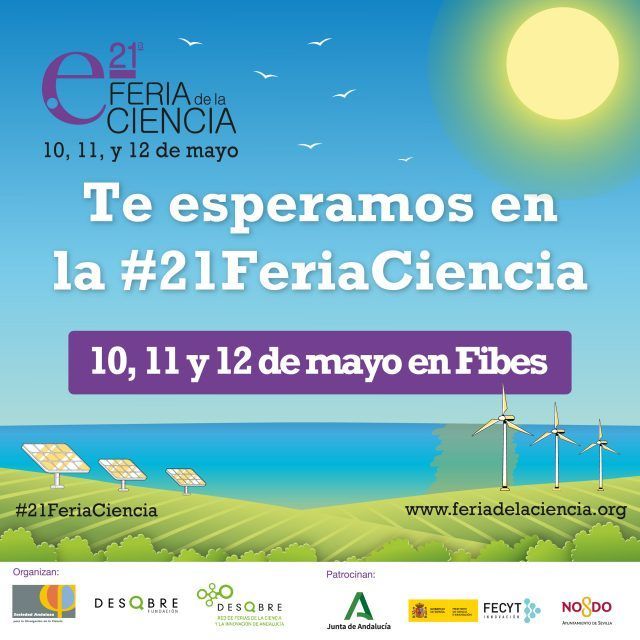SEVILLE / 10, 11, and 12 May 2023
The Seville Science Fair is back
The Healthy Architecture & City group of the School of Architecture of the University of Seville has been present at the 21st edition of the Science Fair held on 10, 11 and 12 May in Fibes (Seville).
The 21st Seville Science Fair is a space in which educational centres, universities, companies, museums and research centres present their scientific dissemination projects to society.
The University of Seville has participated in various formats of this Fair, among them the so-called Asómate a la ciencia, a format of microconferences in which the School of Architecture has been represented by two interventions, one of them has been the researcher of this research group Pablo Valero Flores who has exposed one of the main lines of research of the HAC group with the intervention: Architecture for social welfare. People with Alzheimer’s disease.

The aim of this micro-conference was to present the advances obtained in architectural research applied to Alzheimer’s disease. This research, a novelty in the social and healthcare field of this disease, aims to determine which is the most suitable physical environment to increase the safety, accessibility and autonomy of patients with Alzheimer’s disease, and how to personalise their environment so that it is better adapted to their needs. This scientific research has been carried out for six years and is part of the “Designing for the absence of memory” research line developed by the Healthy Architecture & City group of the E.T.S. Architecture of the University of Seville, in collaboration with the Basic and Applied Neuroscience research line of the Faculty of Medicine of the University of Malaga.
The place in which Alzheimer’s patients live their daily lives is an important element both for their quality of life and for their carers. An accessible, safe, adapted, personalised and flexible space allows for a significant improvement in the activities of daily life of the patient, family members and carers who live with them. The solutions that have been proposed in the fields of safety and accessibility have been enriched in the last decade with contributions from new information and communication technologies. The relationship between space and society has also been developed by disciplines such as psychology and neurology, transcending the field of architecture and recently giving rise to new branches of knowledge such as neuroarchitecture developed by Hölscher, 2011. However, despite the development achieved in these fields, the demands of this group related to the perception of the senses, stress control, memories related to emotions or greater personal autonomy and independence in their daily lives have not yet been addressed with the same intensity.
The design of adapted spaces for Alzheimer’s patients or people with memory problems has not been approached from the architectural discipline. The way to tackle this growing demand requires a new perspective, a new vision, and starts from understanding Architecture as a discipline that studies and analyses the cities, buildings and houses inhabited by Alzheimer’s patients from their point of view, from their needs. From the above positioning, this micro-conference aims to show the application and results of a series of innovative techniques designed to determine, from architecture and technology, the reminiscences that architecture produces in the memories, sensations or experiences of Alzheimer’s patients, as well as the influence that it has on the development of their daily activities.


